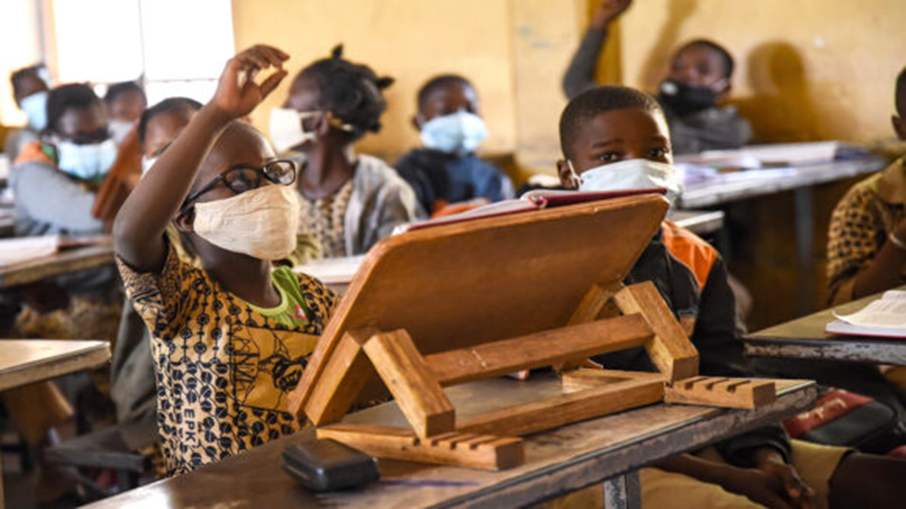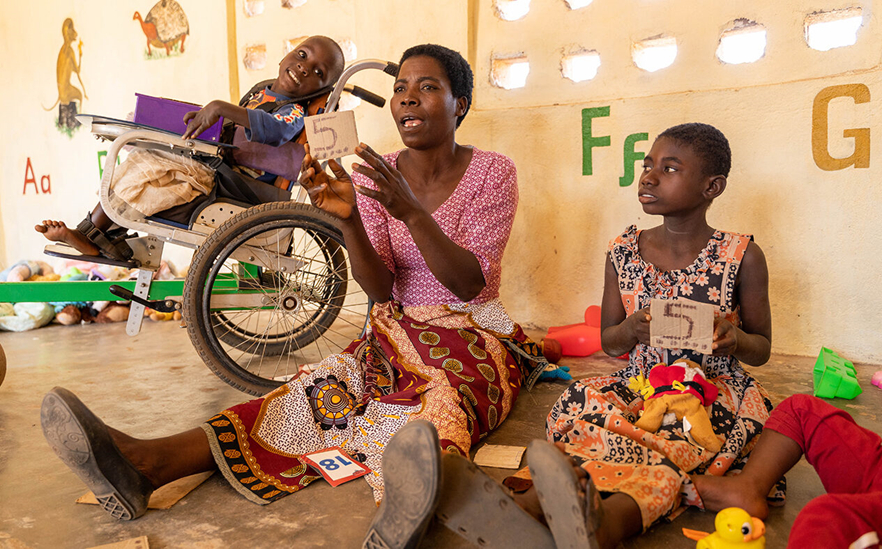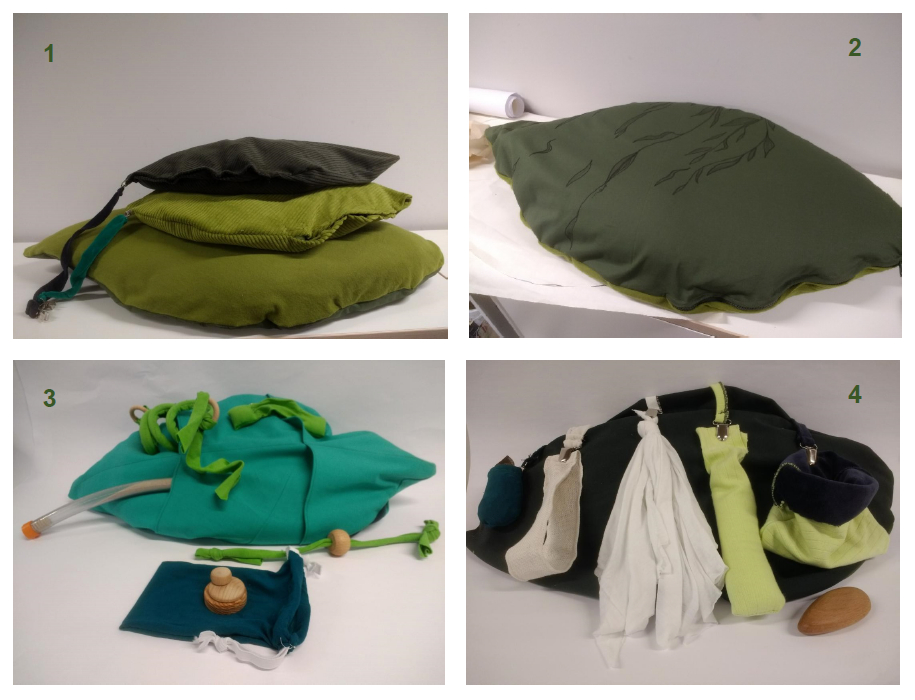By Ingrid Lewis and Laura Davidson.
(This blog is also available in Arabic)
Mental health is not given enough attention within the field of inclusive education. This must change.
Adhi and Rahina’s experiences*
Adhi lives in Indonesia. His father left the family last year when Adhi was 9. No one knows where he went. Adhi’s grandparents told him he had to look after his mother and siblings, that he was now the ‘man of the house’. At first, Adhi felt proud to take on this important role, but as things became tougher at home, and with money problems, Adhi began to feel increasingly anxious. He had several panic attacks at school and the other boys laughed at him. He was very embarrassed and this further increased his anxiety. Now Adhi will not speak to anyone and refuses to leave the house or go to school.
Rahina, from Malawi, is 14. She has heard voices in her head for as long as she can remember. When she was small her parents said she was probably talking to imaginary friends, like many children do. However, as she got older Rahina knew this was not the case. Sometimes the voices were extremely loud and she could not make them stop. She would be unable to sleep for days, and her school work really suffered. She faced regular punishments for failing to complete homework or pass tests. In the last few months the voices have told Rahina to kill herself. Rahina is so scared. One night she drank some of her father’s alcohol, and it quietened the voices in her head. Now she tries to steal alcohol from family and neighbours as often as possible.
Adhi and Rahina are very different children living in very different places, but they both experience mental health difficulties. Adhi’s increasingly severe anxiety started when his father left. Rahina has lived with hearing voices all her life. For both children, experiencing mental ill-health is frightening, and is having a serious impact on their education. Globally, millions of children like Adhi and Rahina experience a wide variety of mental health issues, but their difficulties and experiences are often not recognised, or their needs effectively addressed in school.
Stigma and misunderstanding
While disability issues are increasingly being discussed and addressed in education and wider society, mental health issues remain shrouded in stigma. There is little understanding of mental health among families and communities or in schools, leading to negative attitudes and fear regarding family members or learners with mental ill-health. Education staff specialising in supporting learners with health and disability issues often lack the knowledge, skills and confidence to provide support to learners experiencing mental ill-health and their families. The progress being made around policy and practice for disability-inclusive education often wrongly excludes mental health, and this urgently needs to be redressed. In order to make more progress, certain myths and misunderstandings need to be addressed and broken down.
In this blog post we will discuss some of the common wrongful assumptions regarding mental health issues and how these relate to inclusive education. This blog is intended as a stimulus for discussion, and we are committed to using the EENET global network to share practical experiences of supporting the inclusion of learners experiencing mental health difficulties.
Mental health and the UNCRPD
The UN Convention on the Rights of Persons with Disabilities (CRPD), Article 1 states, “Persons with disabilities include those who have long-term physical, mental, intellectual or sensory impairments which, in interaction with various barriers, may hinder their full and effective participation in society on an equal basis with others.”
The word ‘include’ indicates that Article 1 is giving examples of what amounts to a disability, and so ‘disability’ is not defined in detail in the CRPD. This allows individual countries which have signed up to the Convention considerable latitude as to the definition of disability in their domestic law. However, the Committee on the Rights of Persons with Disabilities has explicitly stated that persons with mental illnesses (referred to as ‘psychosocial disability’) fall under the Convention.[1]
Unpacking some common wrong assumptions
Assumption: Mental health is an adult issue.
Not true.
Anyone of any age can experience mental ill-health. Unfortunately, mental health difficulties in children and adolescents can be misinterpreted as ‘bad behaviour’, ‘naughtiness’ or ‘typical teenage’ issues. Often, mental health difficulties emerge and become established in childhood or adolescence but may go undiagnosed and unsupported until well into adulthood. The Children’s Society in the UK estimate that 10% of children and adolescents aged 5-16 years experience mental health difficulties, yet 70% of these youngsters do not receive appropriate interventions and support sufficiently quickly to improve their health as adults.[2]
Assumption: Only learners in emergency contexts face mental ill-health.
Not true.
Mental ill-health is something that any learner, living in any country and situation, can experience. Children and young people living in crisis, emergency and conflict situations may face a greater risk of abuse, violence and trauma which impacts on mental wellbeing. They may face greater challenges in getting their support and learning needs relating to mental health recognised and addressed, especially if their mental health difficulties are long-term rather than directly resulting from the trauma of crisis/conflict. But it is by no means only learners in emergency contexts who experience mental ill-health and who need to be included in supportive education.
Assumption: Mental health is an issue for doctors, not for schools and teachers to deal with.
Not true.
We already know that teachers play an important role in helping to identify children’s learning needs. While we do not expect teachers to be medical experts – they are not expected to diagnose health issues, disabilities or impairments – an inclusive teacher constantly observes her/his learners and notices if something is not right. Inclusive teachers can spot the signs that a learner is experiencing difficulties seeing, hearing, understanding, communicating, moving, etc., and they know when and how to seek help and advice as well as how to work with the family to better understand and support the learner’s needs. In the same way, inclusive teachers can and should be able to notice when a learner is showing signs of mental health difficulties and take appropriate steps to find them the necessary support. Teachers need inclusion-focused training and support that includes mental health issues.
Assumption: Mental health is not an inclusive education issue.
Not true.
Inclusive education is not just about including learners with disabilities, it is about ensuring we tackle every barrier to access, participation and achievement faced by every learner, whatever their status and background. The prejudice and stigma surrounding mental ill-health, the disruption that ill-health (mental or physical) can bring to an individual’s life, and the impact on self-esteem, confidence, motivation, etc., all impact on a learner’s attendance, participation and achievement. The barriers to access, participation and achievement for learners with mental ill-health may be more covert, less acknowledged, more shrouded in embarrassment and taboos, but that gives us an even greater impetus to ensure that their rights and needs are addressed through inclusive education.
Assumption: Teachers need to be specialists and have lots of extra training before they can have children with mental ill-health in class.
Not true.
The chances are every teacher has already had children with mental ill-health in their class, perhaps without realising it, or they may have assumed the learners were exhibiting ‘bad behaviour’. We know teachers do not have to be disability or medical experts to teach a child with a disability; equally they do not have to be mental health experts or doctors to teach a child with mental health difficulties. Good teaching practices are needed, such as observing for early signs that a learner is experiencing problems, understanding each learner’s interests, needs and background, and working with family and other support resources (if they exist) to develop individual education/support plans.
Assumption: Teachers have too many challenges already.
Not true.
Well, yes; teachers do have a lot to deal with, but they also have a legal and moral duty to uphold learners’ rights. Today it is accepted that teachers have a duty to uphold educational rights for learners with disabilities and all other marginalised groups, and so they have an equal duty to uphold the rights of learners experiencing mental health difficulties. Teachers will always face a diverse range of challenges, and schools are not permitted to close their classrooms to everyone who does not meet their definition of a perfect learner. The key to dealing with diverse challenges is for teachers to have ongoing support and professional development opportunities, working collaboratively with colleagues, to learn from each other’s experiences and gain confidence and strength from each other.
Assumption: Learners with mental health difficulties should be kept separate for safety reasons.
Not true.
Much of the stigma surrounding mental ill-health stems from lack of understanding and from stereotypical beliefs about people who experience mental health difficulties. For example, there is a tendency for the media and movies to inaccurately portray mental ill-health as synonymous with violent or dangerous behaviour, perpetuating a public fear of people with mental ill-health. The vast majority of people who experience mental ill-health present no greater safety risk than anyone else in the population. In fact, there is significant evidence that they are more likely to be on the receiving end of violence than others in the community.[3] Excluding such learners violates their education rights, and isolation may contribute to a worsening of their mental health.
Assumption: There is nothing we can do, because we do not have mental health professionals to help us at our school.
Not true.
There is usually something we can do, even if we cannot find solutions that are as comprehensive as we would like. The lack of experienced and skilled mental health professionals is a problem worldwide, in schools, in health services and across society generally. There are steps that can be taken in conjunction with inclusive education projects. For example, many such projects are connected to community-based rehabilitation (CBR) programmes which help learners with impairments and health conditions to access rehabilitation and medical support, enabling them to join in education, employment and other aspects of community life. CBR programmes need to consider mental health too. We can lobby for this to happen. If we work for organisations that fund or run CBR programmes, we can make sure that the CBR programmes we support embed mental health as part of their mandate. Teachers do not have control over the support and referral services available to them, but if they collaborate, they can help to demand that local CBR or other health referral services expand to cover mental health.
Assumption: All children who experience mental health difficulties are victims of abuse or violence.
Not true.
Although it is possible that some might have suffered from abuse or violence, there are many other different reasons for mental health difficulties arising. It is important that teachers and other education personnel should not jump to conclusions, which could lead to further stigmatisation. We also need to be aware that children who experience mental health difficulties may be at greater risk of becoming targets of abuse, and steps are needed to mitigate this.
Assumption: Children/learners with mental ill-health cannot learn. We need to ‘cure’ or ‘fix’ their mental illness first.
Not true.
Everyone can learn, but not everyone is given the correct support or stimulus to help them learn, or provided with the necessary support in their lives, family or community to enable them to engage in effective learning. Children with mental ill-health may need their learning to be planned and supported in a way that takes account of their health issues, just like any learner with a physical health condition or disability. This might include, for instance, flexible timetabling and lesson planning, curriculum and assessment/exam adaptations, and flexible support options including extra access to one-to-one counselling or mentoring.
Assumption: Teachers with mental ill-health should not be allowed to teach in schools.
Not true.
To exclude teachers with mental ill-health from the profession would be discriminatory and short-sighted. Within inclusive education we fight hard to ensure that teachers are representative of society, so that every learner has a better chance of being taught by, or having access to a role model who they feel understands them and their experiences. This is why we work hard to ensure a gender balance in the teaching profession, and why we want more teachers who represent language and ethnic minority groups, as well as those with disabilities. We also need teachers who have experience of health issues, both physical and mental. One of the best ways for us to support learners with mental ill-health is if we have people working in schools and with learners who know what mental ill-health means – not just professionally, but from a personal perspective.
Teaching can be a very stressful profession. Teachers face pressure to deliver results, to ensure learners pass exams, to help their school climb the national ‘league tables’, to satisfy parents’ demands for achievement and discipline, etc. They are constantly being asked to cope with new curricula, materials, rules, and inspections, and to deal with a never-ending flow of new learners who each bring unique needs and problems to the classroom. There is a strong chance that at some point in their career teachers will experience some form of mental ill-health, and when they do, the education system must be ready to support them. This might mean ensuring there are mental health referral and support options available to teachers; mechanisms for reviewing workloads and adjusting timetables; peer support systems; and personal development options that help teachers build professional skills and personal coping mechanisms to make the tasks within their job more achievable.
Conclusion
The topic of mental health and inclusive education is far more extensive than we can cover here. This post has just scratched the surface, but we hope it kick-starts some more discussions around the issue.
EENET is committed to embedding mental health issues into the information we document and share about inclusive education, and into our consultancy services, whether that be supporting the design of inclusive education programmes, training teachers, or researching inclusion issues. So far, in our 22 years of work, we have received almost no documentation for sharing that discusses mental health, and no requests from consultancy clients to address the issue within inclusive education initiatives.
We are therefore laying down the challenge. We need you to share your experiences and ideas around inclusive education and mental health, and to consider developing innovative work that ensures learners and teachers with mental health needs are recognised and supported within inclusive education.
* Adhi and Rahina’s stories are adaptations that use elements of several real life stories.
[1] General Comment No. 1 on Article 12 of the CRPD, adopted by the Committee on the Rights of Persons with Disabilities on 11 April 2014 (11th session).
[2] https://www.mentalhealth.org.uk/statistics/mental-health-statistics-children-and-young-people
[3] https://jech.bmj.com/content/70/3/223



